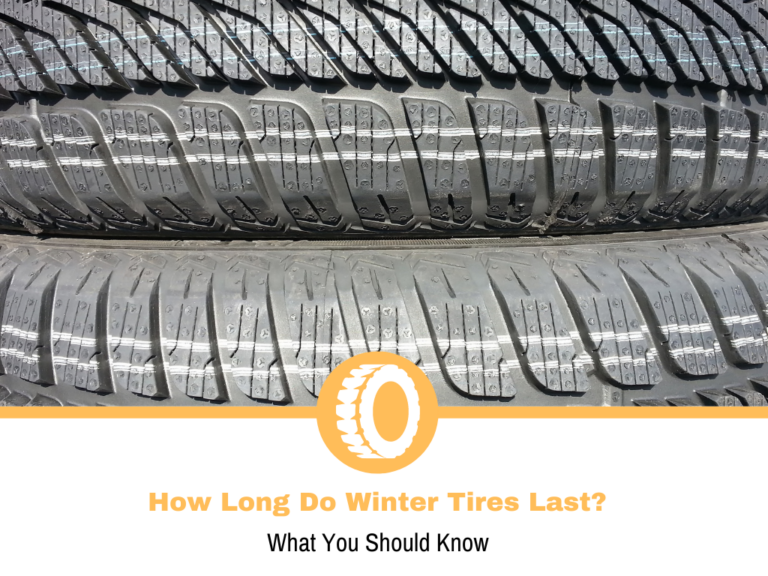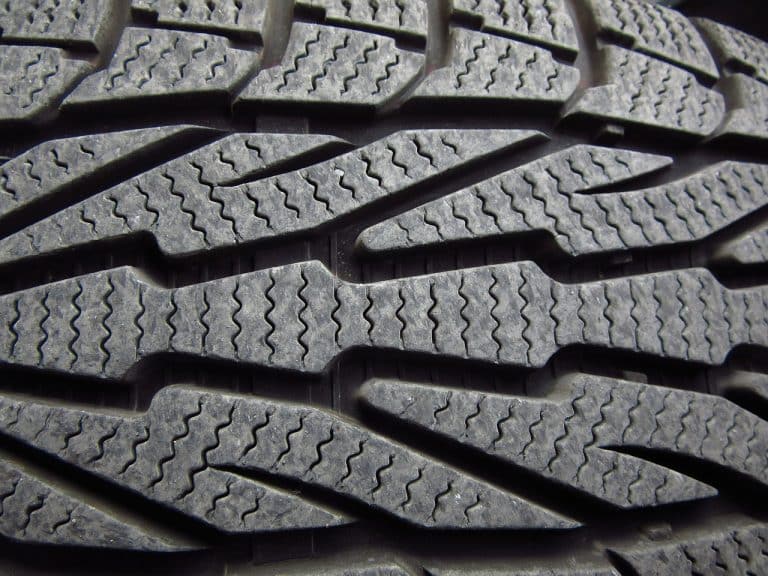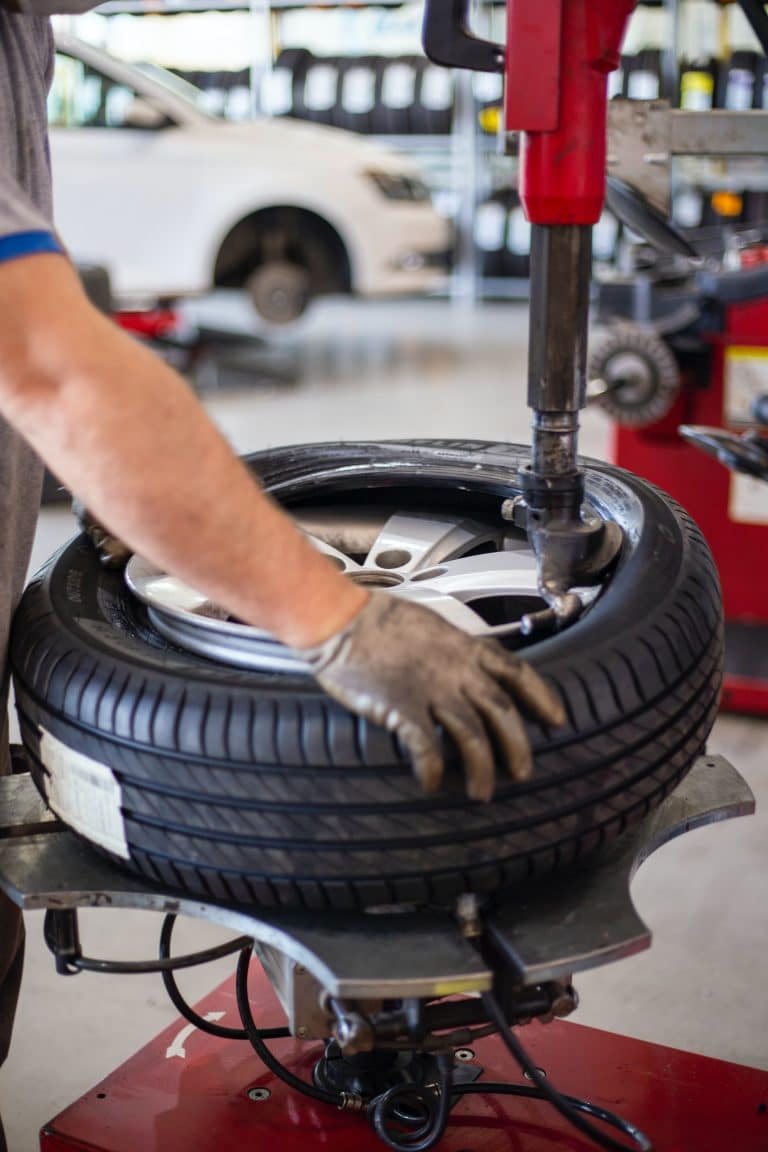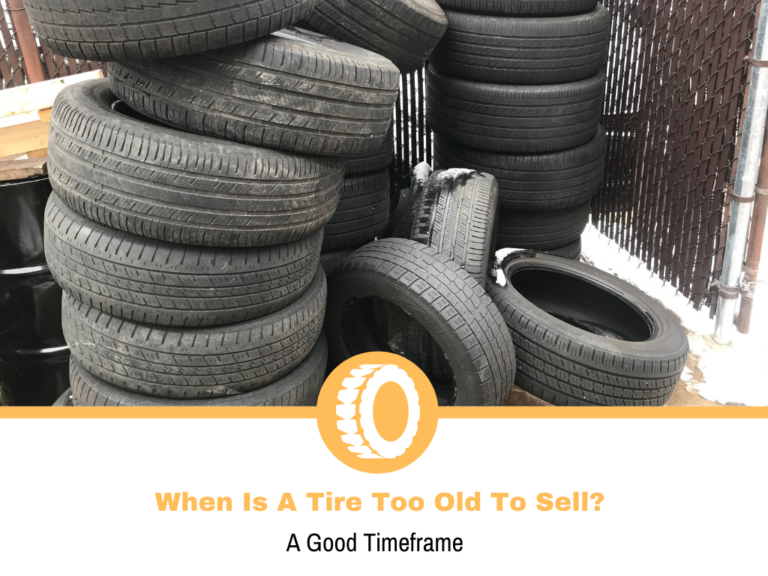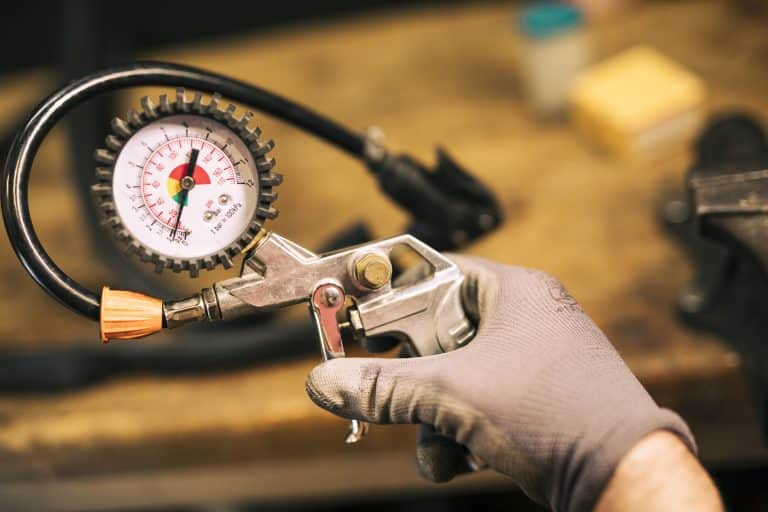How To Fix Tire Cupping
Tire cupping can produce a lot of nuisances, ranging from excessive noise coming from the wheelhouse to loss of traction and control since the tires have a series of uneven, scooped treads.
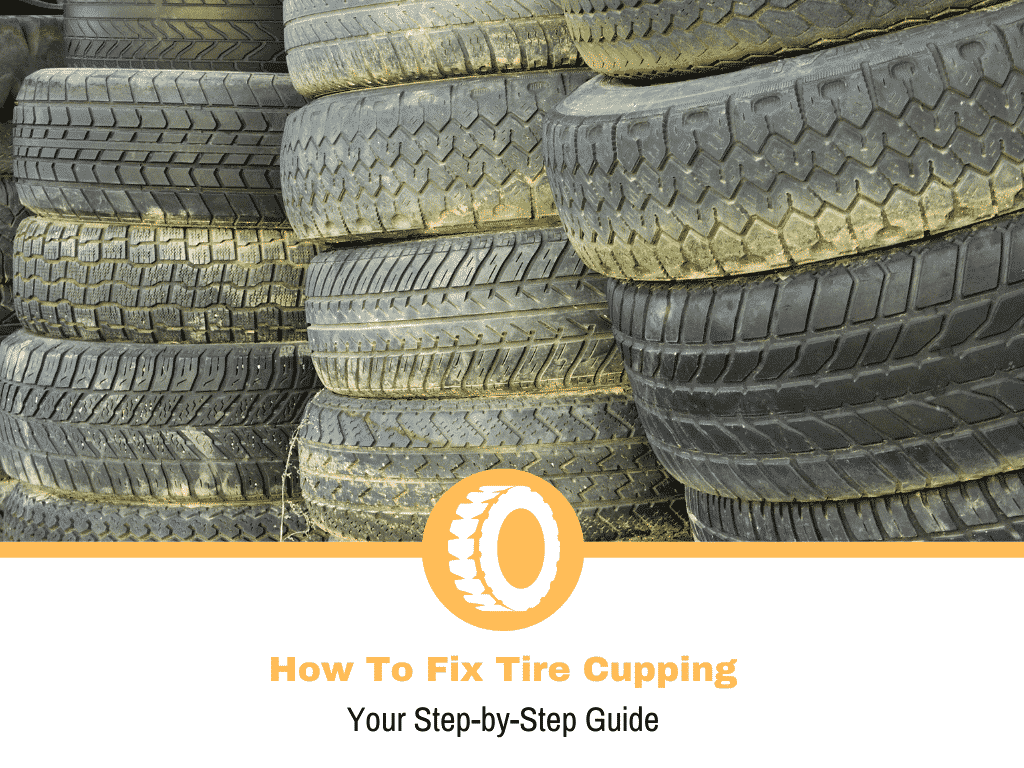
Diagnosing for cupped tires, knowing their causes, and fixing them appropriately is a more practical thing to do rather than outright purchasing a new set of tires as the latter will not only lead to uncalled expenses but also not address its root cause.
To fix tire cupping, certain procedures will be done such as tire rotation, wheel balancing, and alignment to address the causes of cupping. Worn-out suspension parts will also be replaced as part of the process, while a tire-shaving machine will be used to smoothen out the cupped surfaces.
What is Tire Cupping?
Tire cupping, as you might have guessed, looks like a series of cupped or scooped dips appearing on the outer edge of tires’ tread. It results in an uneven surface in the tread of the tires. Cupped tires also tend to be noisier too especially on highway speeds, but the main concern with having cupped tires is the potential risk of traction and control loss especially on emergency braking and maneuver.
Knowing the possible causes of tire cupping might prevent these from happening in the first place.
Possible Causes of Tire Cupping
Worn out suspension system component
Suspension systems that include shock absorbers, bushings, and strut assembly are all subject to wear and tear over time. A worn-out component can cause excessive bouncing as these parts fail to evenly distribute the vehicle weight. This will in turn create uneven points of pressure in the tires, thus, tire cupping.
Misaligned and unbalanced tires
Ideally, a vehicle should have the correct angles of tires that evenly contact with the road. However, wheel misalignment happens, and consequently, this misalignment brings uneven stresses on the tire that will somewhat lead to cupping, or an irregular tire wear pattern also called sawtooth wear.
Poor quality tires
Poor quality, cheaply bought tires might not have the same rigidity and endurance which tires made with quality materials have. These cheap tires might also skip on the intended quality and stress checks to measure their durability.
Signs of Tire Cupping
Tire cupping can be visibly distinguished with random scoops or cups at certain areas of tire tread. Moreover, there are also tactual and auditory signs you may feel and hear that indicate that you may experience tire cupping. Some of these include a steering wheel and seat vibrations, noise coming from the tires, and a steering drag on either side when at cruising speeds.
Steering wheel and seat vibrations
Vibrating or shaking felt through the steering wheel or seat are common manifestations of unbalanced tires, which can be potential cupping. If the vibration is felt in the steering wheel, the front seats may be unbalanced, while if the vibration is felt on the seat, the rear wheel tires are most likely unbalanced. If the vibrations were present on both the steering wheel and the seat, it is critical to have them checking altogether for possible cupping.
Noise coming from the tires
Naturally, aside from the engine and the outside, noise coming from the wheel area is given, but if you are noticing noises coming from these areas greater than normal, a possible tire cupping may be the case since cupped tires tend to be noisier than usual, especially at highway speeds.
Dragging to left or right when steering
Since tire cupping can be the result of misaligned wheels, a veering vehicle on either side is one of the recognizable symptoms of misalignment.
Visible cups or scoops in the outer side
You can check these ‘cupping’ yourself by looking at the tires for any uneven, scoop-like patches in tires’ tread.
How to Fix Tire Cupping
- Take the vehicle to an auto repair shop
- Tire Rotation
- Wheel balancing and alignment
- Tire-shaving Machine
Proceeding directly to your trusted tire shop is your best option when you feel something is wrong with your tires. At the very least, you can diagnose the cause by examining the tire one by one, identifying the root cause.
The first phase to fix tire cupping will be to identify the root cause. Properly diagnose your tires using several techniques to know what causes the problem. Then, when you have verified what causes tire cupping, have them serviced in a tire shop for appropriate repairs such as rotation, balance, alignment, tire shaving, or replacement should the condition turn out to be severe to be repaired.
Part 1: Diagnose Tire Cupping
Diagnosing tires for cupping or scooping can be done by yourself through a careful and thorough inspection. First by examining the tires one by one, checking if the shocks are the culprit, then checking the front tires which allows you to determine if there’s an alignment problem that leads to tire cupping.
Examine the tires one by one
To be able to check your tires properly for cupped tires, park your car on a level surface, preferably solid ground, then pull up the hand brake to keep the vehicle in place. Examine the tires one by one, on the inner and outer sides of the treads should any sign of cupping occur.
Push down the vehicle fender
Push down the fender area next to the cupped tire. If the vehicle bounces up and down more than once after you release after pushing down, it is more likely that the shocks are the reason for cupping.
Check for cupping in the front tires
Look for any cupping either the inside or outside of the tread. If the cupping is present on either side, wheel misalignment is most likely the cause.
Part 2: Tire Cupping Remedies
The next part is to take the vehicle to a tire repair shop to take an appropriate remedy. This may range from replacement of worn-out shocks, tire rotation, wheel balancing, and alignment, to tire shaving or a replacement for severe cases of cupping.
Take the vehicle to an auto repair shop
Aside from rotating your tires, the rest of the remedy can only be done by a tire or an auto repair shop. If your vehicle is still under the manufacturer’s warranty, take them to an authorized dealership. You can have some of the affected parts such as shocks replaced for free, labor charges included.
Tire rotation
In some cases where the cupped tires are in the front, tires will be rotated to the rear to even out the tires.
Wheel balancing and alignment
Before camber alignment, your wheels might also be checked in a wheel balancing machine as weights might not be accurate to the level of wear.
Next, as part of a tire rotation, your vehicle will also undergo a proper wheel alignment procedure to prevent recurrence of tire cupping.
Affected tires might be brought to a tire-shaving machine
This procedure, though rarely required, is necessary for severe cupping to even them out. As tires were removed from the vehicle, they will be mounted to a specialized machine to smoothen out the cupping or scooping.
How to Prevent Tire Cupping
Tire cupping prevention can be addressed with regular tire care maintenance. It should be done on time if you want your tires to have a longer lifespan. These processes include tire rotation, wheel balancing and alignment, and maintaining the proper air pressure. Additionally, your vehicle should at least be checked every 6 months regardless of mileage as driving in different road conditions might affect overall tire health.
Periodic tire and suspension maintenance check
This process is better done in timing with your car’s periodic maintenance visit. Additionally, you may be able to have the suspension checked during this scheduled visit since these are one of the culprits of cupped tires.
Wheel balancing and alignment
As your tires wear, previously installed weights may not be applicable and a balancing might be required. Moreover, tire professionals can easily attest upon visual inspection should your vehicle be bound for an alignment.
Maintain proper air pressure
Did you know that a lot of tire wear problems were caused by insufficient tire air pressure? Have them checked at least once a month to maintain optimal air pressure. You may also take advantage of certain devices that replace the traditional valve cap with a sensor to monitor the pressure without pulling out a traditional tire pressure gauge. Likewise, newer vehicles equipped with tire pressure monitoring do the same.
Final thoughts
We often mistake tire maintenance with just keeping the rubber healthy alone. However, most of the causes of tire cupping were brought by worn out or poorly-maintained vehicle parts that consequently affect the tires over time if left unnoticed. In other words, tire cupping can be prevented if you follow regular car maintenance checking and replacement schedules.
